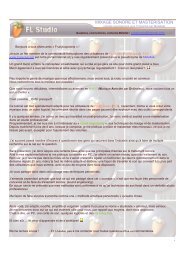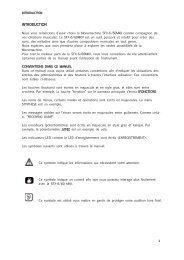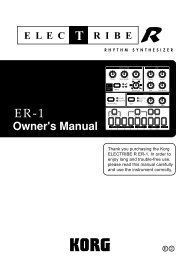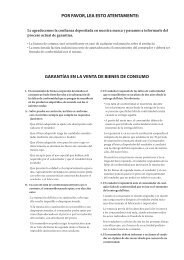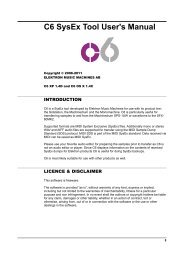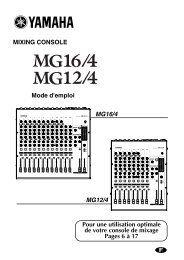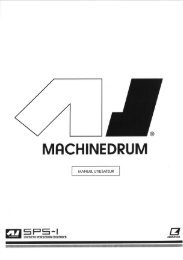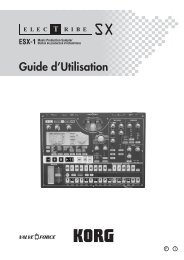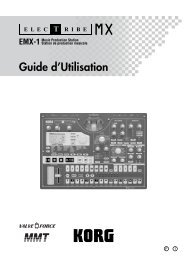Access Virus User Manual - SoundProgramming.Net
Access Virus User Manual - SoundProgramming.Net
Access Virus User Manual - SoundProgramming.Net
Create successful ePaper yourself
Turn your PDF publications into a flip-book with our unique Google optimized e-Paper software.
60 CHAPTER 6<br />
Handling<br />
PARAMETER SELEC-<br />
TION AND DATA ENTRY<br />
In the <strong>Virus</strong>, we distinguished<br />
between two types of parameters.<br />
On the one hand, it features<br />
parameters that are essential in<br />
generating or synthesizing sounds,<br />
on the other hand it has sound<br />
parameters and organizational<br />
parameters that are more of a<br />
peripheral nature. This distinction<br />
is apparent in handling and operation<br />
of the <strong>Virus</strong>: All essential<br />
sound parameters feature a dedicated<br />
knob or button so that you<br />
can access these directly - especially<br />
while you are playing!. In just<br />
a few cases (where appropriate or<br />
where it facilitates better handling),<br />
the control features have<br />
dual functions.<br />
Peripheral parameters, on the<br />
other hand, are compiled in<br />
menus. Among these menus are<br />
above all the EDIT, the CTRL (short<br />
for ”Control” and the EFFECTS<br />
menu as well as the four local EDIT<br />
menus in the individual function<br />
blocks. The EDIT menus contain<br />
parameters that you will require<br />
less frequently, but some of these<br />
are nonetheless indispensable for<br />
programming sounds. The local<br />
EDIT menus are there for a purpose<br />
– to help you distinguish clearly<br />
between the various parameters.<br />
Here you’ll find parameters that<br />
affect directly the given functional<br />
section, but are not equipped with<br />
dedicated control features.<br />
Irrespective of which operating<br />
mode you may have activated, the<br />
EDIT menu contains the sound<br />
parameters of the selected SINGLE<br />
program (in SINGLE mode and<br />
MULTI SINGLE mode) or organizational<br />
parameters for MULTI mode.<br />
In SINGLE mode and MULTI SINGLE<br />
mode, the CTRL menu contains further<br />
SINGLE parameters such as<br />
the arpeggiator, etc.<br />
In the CTRL menu, you’ll also find –<br />
irrespective of the given operating<br />
mode – a number of global parameters.<br />
These are called MIDI, SYS-



